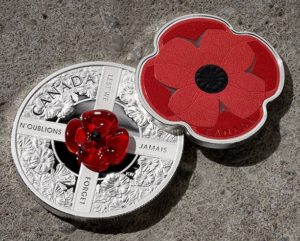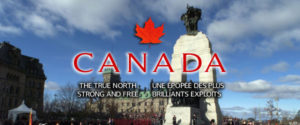
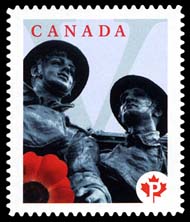
LEST WE FORGET + CZEŚĆ ICH PAMIĘCI + N’OUBLIONS PAS
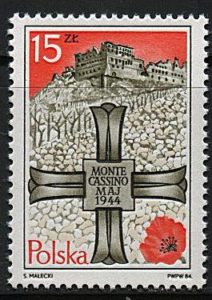
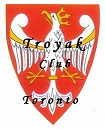
TROYAK EXECUTIVE TEAM is informing all members, colleagues, collectors and Polonia at large, that Club meetings taking place at John Paul II Polish Cultural Centre, 4300 Cawthra Rd. (just south of Hwy. 403), Mississauga, Ontario. The new members are always welcome. www.polishculturalcentre.ca
ADRES SPOTKAÑ KLUBOWYCH! Zarząd Główny Klubu “Troyak” informuje wszystkich członków kolekcjonerów, sympatyków oraz całą Polonię, że spotkania klubowe odbywają się w Polskim Centrum Kultury im. Jana Pawła II, przy 4300 Cawthra Rd. (na południe od autostrady 403), Mississauga, Ontario. Zapraszamy nowych członków do prężnego. Klubu “Troyak”. www.polishculturalcentre.ca

“TROYAK” CLUB NEXT MEETINGS …
NASTĘPNE SPOTKANIA KLUBU “TROYAK” …
24th November 2019 @ 4:30 p.m.

December 2019 @ Happy Holidays !

12th January 2020 @ 4:30 p.m. … Annual General Meeting
26th January 2020; 23rd February 2020

8th March 2020 …
XVII Polish – Canadian Coin, Stamp & Collectibles Show 2020
29th March 2020 @ 4:30 p.m.
26th April 2020
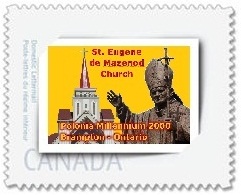
TROYAK CLUB @ st. John Paul II – 100
Birthday Anniversary Celebration 2020
Saturday 16 May – Sunday 17 May 2020
St. Casimir’s Church
www.kazimierz.org
Parish Hall … 156 Roncesvalles Ave. Toronto, Ontario
Stamp Exhibit … Pope John Paul II on World Stamps and
displays of Coins, Medals, Collectibles dedicated to
st. John Paul II by Troyak Club Members.

31st May 2020; 21st June 2020

July & August 2020 – Summer break … Letnie wakacje …
TROYAK CLUB @ Roncesvalles Polish Festival 2020
Saturday, September 12th …
Sunday, September 13th, 2020
https://polishfestival.ca www.kazimierz.org

27th September 2020

4th October 2020 @ 9:00 a.m. to 4:00 p.m. …
Mississauga’s 5th Annual Fall Show
25th October 2020; 29th November 2020

100-lecie Polskiego Towarzystwa Chemicznego
100th Anniversary of the Polish Chemical Society
www.poczta-polska.pl
Dnia 29 czerwca 2019 r. została wprowadzona do obiegu kartka pocztowa z nadrukowanym znakiem opłaty pocztowej, emisji: 100-lecie Polskiego Towarzystwa Chemicznego. Wartość nominalna znaku opłaty pocztowej z oznaczeniem literowym A odpowiada wartości nominalnej znaczka pocztowego używanego do uiszczenia opłaty za ekonomiczną przesyłkę listową nierejestrowaną, w tym kartkę pocztową, w obrocie krajowym, w formacie S o masie do 500 g. W prawym górnym rogu strony adresowej kartki nadrukowano znak opłaty pocztowej, na którym umieszczono wizerunek prof. Leona Marchlewskiego, współzałożyciela i pierwszego prezesa Polskiego Towarzystwa Chemicznego; wzdłuż dolnej krawędzi znaczka umieszczono napis: POLSKA oraz oznaczenie wartości: A, będące elementem grafiki przedstawiającej wiązanie chemiczne.
W części ilustracyjnej kartki znajduje się nazwa emisji ,,100-lecie Polskiego Towarzystwa Chemicznego” oraz zestaw naczyń używanych do doświadczeń chemicznych na tle historycznego dokumentu z 7 czerwca 1919 roku – zaproszenia na zebranie założycieli Polskiego Towarzystwa Chemicznego i fragmentu układu okresowego pierwiastków. Kartkę o wymiarach 148 x 105 mm wydrukowano jednostronnie, techniką offsetową, na kartonie białym, w nakładzie 8000 sztuk. Autor projektu kartki: J. Konarzewski.
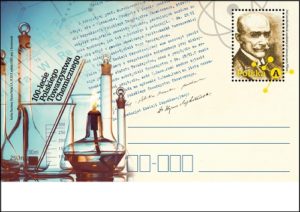
100th Anniversary of the Polish Chemical Society …
denomination: 3,30 PLN; number of stationeries in set: 1;
print run: 8.000 pcs; printing technique: offset;
card size: 148 x 105 mm; author: J. Konarzewski;
release date: 29th June 2019.

50-lecie lądowania człowieka na Księżycu
50th Anniversary of the landing of man on the moon
www.poczta-polska.pl
W dniu 20 lipca 2019 r. został wprowadzony do obiegu znaczek pocztowy o wartości 8,40 zł emisji “50-lecie lądowania człowieka na Księżycu”. Na znaczku przedstawiono Księżyc na tle gwieździstego nieba; w części centralnej Księżyca umieszczono czerwoną strzałkę symbolizującą miejsce lądowania człowieka na Księżycu. Wzdłuż dolnej krawędzi znaczka umieszczono napis: 50-LECIE LĄDOWANIA CZŁOWIEKA NA KSIĘŻYCU oraz oznaczenie wartości: 8,40 ZŁ, a wzdłuż lewej krawędzi – napis POLSKA. Znaczek wydrukowano techniką offsetową, na papierze fluorescencyjnym, w formacie: 31,25 x 43 mm, w bloku formatu 90 x 70 mm, w nakładzie 100 000 sztuk. Z tej okazji została wydana również koperta FDC. Autorka projektu: Andrzej Gosik.
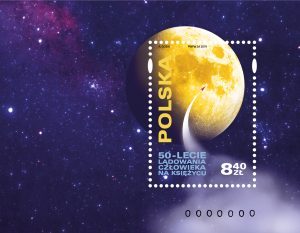
50th Anniversary of the landing of man on the moon…
denomination: 8,40 PLN; number of stamps in set: 1 in a form of a block;
print run: 100.000 pcs.; printing techniques: offset; paper: fluorescent;
stamp size: 31,25 x 43 mm; block size: 90 x 70 mm; number of FDC: 1;
author: Andrzej Gosik; circulation date: 20th July 2019.
16 lipca 1969 roku z Centrum Lotów Kosmicznych na Przylądku Canaveral wystartowała misja Apollo 11. W jej skład wchodzili: Neil Armstrong, Buzz Aldrin oraz Michael Collins. Dwóch pierwszych astronautów wylądowało na Księżycu po 4 dniach, tj. 20 lipca. Następnego dnia Armstrong jako pierwszy człowiek w historii postawił nogę na Srebrnym Globie i wypowiedział słynne zdanie: To jest mały krok człowieka, ale wielki skok dla ludzkości.
Wyprawa z 1969 roku była jedną z misji przeprowadzonych w ramach amerykańskiego programu kosmicznego Apollo. Realizowany był on w latach 1961–1972 i doprowadził do 6 lądowań człowieka na Księżycu. Do tej pory na Srebrnym Globie stanęło 12 osób. Oprócz okolicznościowego znaczka Poczta Polska wydała, w limitowanej wersji, kopertę FDC, czyli kopertę wydawaną w pierwszym dniu obiegu znaczków. Widnieje na niej papierowa rakieta przebijająca się przez chmury.

100. Rocznica powstania Policji Państwowej
100th Anniversary of the Establishment of the State Police
www.poczta-polska.pl
W dniu 24 lipca 2019 r. został wprowadzony do obiegu znaczek pocztowy o wartości 3,30 zł emisji “100. rocznica powstania Policji Państwowej”. Na znaczku przedstawiono podobiznę Józefa Kozubkiewicza w mundurze starszego przodownika Policji Państwowej (fotografia pochodzi ze zbiorów Muzeum Katyńskiego – Oddziału Martyrologicznego Muzeum Wojska Polskiego z siedzibą w Warszawie), policjanta Wydziału Ruchu Drogowego oraz odznakę Policji. Znaczek wydrukowano techniką rotograwiurową, na papierze fluorescencyjnym, w formacie 31,25 x 43 mm, w nakładzie 150 000 sztuk. Arkusz sprzedażny zawiera 50 szt. znaczków. Z tej okazji została wydana również koperta FDC. Autor projektu: Roch Stefaniak.
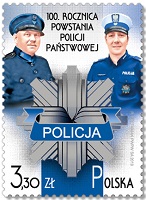
100th Anniversary of the Establishment of the State Police …
denomination: 3,30 PLN; printing techniques: photogravure;
number of stamps in set: 1 (50 pcs in sheet);
print run: 150 000 pcs.; paper: fluorescent;
stamp size: 31,25 x 43 mm; number of FDC: 1;
circulation date: 24th July 2019.

100 lat polskiego Związku Piłki Nożnej
100 years of the Polish Football Association
www.poczta-polska.pl
Wartość nominalna: 4 zł … autor projektu znaczka: Mateusz Sadowski;
liczba znaczków: 1; nakład: 216 000 szt.; technika druku: offset;
format znaczka: 31,25 x 43 mm; papier: fluorescencyjny;
arkusz sprzedażny: 12 znaczków;
data wprowadzenia do obiegu: 30 lipca 2019 r.
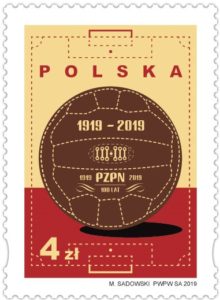
100 years of the Polish Football Association … denomination: 4,00 PLN;
number of stamps in set: 1; print run: 216.000 pcs.; paper: fluorescent;
printing techniques: offset; stamp size: 31,25 x 43 mm;
12 stamps in sheet; number of FDC: 1; author: Mateusz Sadowski;
circulation date: 30th July 2019.

75. Rocznica Powstania Warszawskiego
75th Anniversary of the Warsaw Uprising
www.poczta-polska.pl
Wartość: 7,30 zł … autor projektu znaczka: Bożydar Grozdew;
liczba znaczków: 1 znaczek w bloku; nakład: 100 000 szt.;
technika druku: offset; format znaczka: 31,25 x 43 mm;
format bloku: 70 x 90 mm; papier: fluorescencyjny;
data wprowadzenia do obiegu: 1 sierpnia 2019 r.
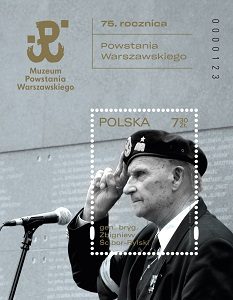
75th Anniversary of the Warsaw Uprising … denomination: 7,30 PLN;
number of stamps in set: 1 in a form of a block; print run: 100.000 pcs.;
printing techniques: offset; paper: fluorescent; stamp size: 31,25 x 43 mm;
block size: 70 x 90 mm; number of FDC: 1; author: Bożydar Grozdew;
circulation date: 1st August 2019.
W czwartek 1 sierpnia br. Poczta Polska wprowadziła do obiegu znaczek pocztowy emisji „75. Rocznica Powstania Warszawskiego”. Autor projektu Bożydar Grozdew przedstawił na znaczku generała brygady Zbigniewa Ścibora-Rylskiego na tle Muru Pamięci z nazwiskami Powstańców Warszawskich, którzy zginęli w walkach w sierpniu i wrześniu 1944 r.
1 sierpnia 1944 roku Armia Krajowa w ramach akcji „Burza” rozpoczęła w Warszawie zbrojne wystąpienie przeciwko niemieckiemu okupantowi. Powstanie trwało 63 dni, w trakcie których żołnierze AK oraz bohaterska ludność stolicy stawiali Niemcom opór w nierównej walce. Sierpniowy zryw pochłonął wiele ofiar – 16 tysięcy powstańców, około 170 tysięcy ofiar cywilnych oraz 10 tysięcy hitlerowców. Ogromne rany odniosła również sama Warszawa, która praktycznie została przez okupanta zrównana z ziemią – zniszczono 72 % zabudowy mieszkalnej oraz 90 % stołecznych zabytków. Oprócz okolicznościowego znaczka Poczta Polska wydała, w limitowanej wersji, kopertę FDC, czyli kopertę wydawaną w pierwszym dniu obiegu znaczków. Widnieją na niej powstańcze dokumenty i fotografie ułożone na bruku jednej ze stołecznych ulic.
Powstanie Warszawskie zapisało się na kartach historii jako jedno z najważniejszych wydarzeń kształtujących polską tożsamość. Było uosobieniem kluczowych wartości, takich jak patriotyzm, wolność czy determinacja w przeciwstawianiu się wrogom. Poczta Polska w przeszłości wydawała znaczki poświęcone Powstaniu Warszawskiemu, ostatnio z okazji 70. oraz 65. rocznicy.

Powstania Śląskie
Silesian Uprisings
www.poczta-polska.pl
Dnia 16 sierpnia 2019 r. został wprowadzony do obiegu znaczek pocztowy o wartości 3,30 zł emisji “Powstania Śląskie”. Na znaczku, po prawej stronie, przedstawiono postać Alfonsa Zgrzebnioka, po lewej stronie – mapę zasięgu I Powstania Śląskiego; w górnej części znaczka umieszczono fotografię oddziału powstańczego, natomiast w dolnej widoczna jest kopalnia węgla w Mysłowicach. W centralnej części znaczka umieszczono lata wybuchu powstań śląskich: 1919, 1920, 1921; wzdłuż dolnej krawędzi – napis: Polska oraz oznaczenie wartości: 3,30 zł; wzdłuż górnej krawędzi – napis: Powstania Śląskie, a wzdłuż prawej krawędzi – napis: Alfons Zgrzebniok. Znaczek wydrukowano techniką offsetową, na papierze fluorescencyjnym, w formacie: 31,25 x 43 mm , w nakładzie 216 000 sztuk. Arkusz zawiera 12 szt. znaczków. Z tej okazji została wydana również koperta FDC. Autor projektu znaczka: Adam Kultys.
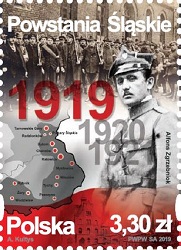
Silesian Uprisings … denomination: 3,30 PLN
number of stamps in set: 1; print run: 216.000 pcs.;
printing techniques: offset; paper: fluorescent;
stamp size: 31,25 x 43 mm; 12 stamps in sheet; number of FDC: 1;
author: Adam Kultys; circulation date: 16th August 2019.

80. Rocznica wybuchu II wojny światowej
80th Anniversary of the outbreak of World War II
www.poczta-polska.pl
Dnia 01 września 2019 r. został wprowadzony do obiegu znaczek pocztowy o wartości 3,30 zł emisji “80. rocznica wybuchu II wojny światowej”. Na znaczku przedstawiono pancernik ,,Schleswig-Holstein” ostrzeliwujący Westerplatte. Znaczek wydrukowano techniką rotograwiurową, na papierze fluorescencyjnym, w formacie 54 mm x 40,5 mm, w nakładzie 161 000 sztuk. Arkusz sprzedażny zawiera 35 szt. znaczków. Z tej okazji została wydana również koperta FDC. Autor projektu: Anna Niemierko.
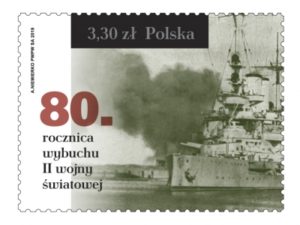
80th Anniversary of the outbreak of World War II …
denomination: 3,30 PLN; number of stamps in set: 1 (35 pcs in sheet);
print run: 161 000 pcs.; printing techniques: photogravure;
paper: fluorescent; stamp size: 54 mm x 40,5 mm;
number of FDC: 1; author: Anna Niemierko;
circulation date: 01st September 2019.
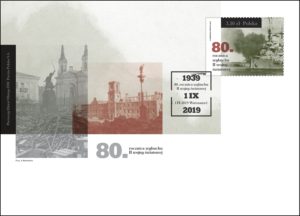
1 września br. Poczta Polska wprowadziła do obiegu znaczek upamiętniający 80. rocznicę wybuchu II wojny światowej. Autorka projektu, Anna Niemierko przedstawiła na znaczku fotografię pancernika „Schleswig-Holstein” ostrzeliwującego Westerplatte. Oprócz okolicznościowego znaczka Poczta Polska wydała, w limitowanej wersji, kopertę FDC, czyli kopertę wydawaną w pierwszym dniu obiegu znaczków. Widnieje na niej fotografia zburzonej Warszawy.
– Dzięki naszemu znaczkowi oddajemy hołd wszystkim ofiarom konfliktu, który na zawsze zmienił losy ludzkości. Dzięki wydawnictwom filatelistycznym chcemy przypominać wszystkim Polakom o jednym z najważniejszych wydarzeń XX wieku – mówi Przemysław Sypniewski, prezes zarządu Poczty Polskiej. II Wojna Światowa to największy, najkrwawszy i najtragiczniejszy konflikt zbrojny w dziejach ludzkości. Szacuje się, że zginęło 60 milionów ludzi. Walki toczyły się w Europie, Afryce, Azji oraz na wszystkich oceanach. Wojna rozpoczęła się od napaści Niemiec na Polskę. 1 września 1939 r. wojska niemieckie bez wypowiedzenia wojny przekroczyły o świcie granice Rzeczypospolitej. Osamotnione w walce Wojsko Polskie nie mogło skutecznie przeciwstawić się nazistowskiej agresji.

80. Rocznica obrony Poczty Polskiej w Gdańsku
80th Anniversary of the Defense of the
Polish Post in Gdańsk
www.poczta-polska.pl
Dnia 01 września 2019 r. został wprowadzony do obiegu znaczek pocztowy o wartości 3,30 zł emisji “80.rocznica obrony Poczty Polskiej w Gdańsku”. Na znaczku przedstawiono trzy postaci uzbrojonych pracowników Poczty Polskiej w mundurach; wzdłuż górnej krawędzi umieszczono napis POLSKA, oznaczenie wartości 3,30 zł oraz temat emisji: 80. ROCZNICA OBRONY POCZTY POLSKIEJ W GDAŃSKU, a w tle – historyczny logotyp Poczty Polskiej przedstawiający trąbkę. Znaczek wydrukowano techniką offsetową, na papierze fluorescencyjnym, w formacie: 31,25 x 43 mm, w nakładzie 216 000 sztuk. Arkusz zawiera 12 szt. znaczków. Z tej okazji została wydana również koperta FDC. Autor projektu znaczka: Maciej Jędrysik.
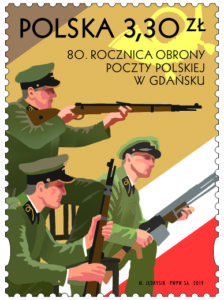
80th Anniversary of the Defense of the Polish Post in Gdańsk …
denomination: 3,30 PLN; number of stamps in set: 1;
print run: 216.000 pcs.; printing techniques: offset;
paper: fluorescent; stamp size: 31,25 x 43 mm;
12 stamps in sheet; number of FDC: 1;
author: Maciej Jędrysik;
circulation date: 1st September 2019.
Poczta Polska: gdańscy pocztowcy przykładem bohaterstwa i ofiarności … Wyrok na 38 polskich pocztowcach wykonano o świcie, 5 października 1939 roku na gdańskiej Zaspie. Prowadzono ich spętanych. Po rozstrzelaniu, zwłoki pochowano we wspólnej mogile i zasypano gaszonym wapnem. Miejsce zbrodni pozostało nieznane przez kolejnych 50 lat. Historia obrony Poczty Polskiej w Gdańsku należy do jednych z najtragiczniejszych w historii naszego kraju. W 80. rocznicę tamtych, dramatycznych wydarzeń Poczta Polska wyemitowała okolicznościowy znaczek upamiętniających pocztowców, którzy stawili opór Niemcom.
1 września 1939 roku o godzinie 4:45, równolegle z ostrzałem Westerplatte, Niemcy zaatakowali Urząd Pocztowy Gdańsk 1. W pierwszej kolejności Niemcy zdetonowali ścianę pobliskiego Krajowego Urzędu Pracy. Pocztowcom udało się jednak odeprzeć ich atak, czym zupełnie zaskoczyli najeźdźców. W odpowiedzi teren Poczty został odcięty kordonem od reszty miasta. W trakcie ataku w gmachu budynku przebywało 43 pocztowców z Gdańska, 10 pocztowców delegowanych z Bydgoszczy oraz jeden gdański kolejarz. Zdecydowana przewaga liczebna oraz militarna niemieckich agresorów nie dała obrońcom Urzędu najmniejszych szans na zwycięstwo. Bronili się jednak dzielnie. Po całym dniu walk ich sytuacja była dramatyczna. Byli ranni, odcięci od świata, z kończącymi się zapasami amunicji, bez prądu i wody. Gęsty dym i ogień utrudniały widoczność i oddychanie. Silny ostrzał wymusił na nich konieczność zejścia do piwnic.
Po 14 godzinach walki nastała ostatnia faza tego dramatu. Niemcy wpompowali do piwnic budynku benzynę i wrzucili tam granat. Los obrońców był właściwie przesądzony. W trakcie starć zginęło 13 pocztowców, 10 zostało ciężko rannych. Głównymi dowódcami gdańskiego oporu byli Karol Guderski oraz po jego śmierci Alfons Flisykowski. Po kapitulacji Urzędu Pocztowego Gdańsk 1, Niemcy zdecydowali o osadzeniu ocalałych obrońców Poczty w areszcie, który utworzyli w gmachu gdańskiej szkoły średniej dla dziewcząt – Victoriaschule. Tydzień po agresji na Polskę, 8 września 1939 roku Niemcy zorganizowali proces pocztowców. Sąd polowy generała Wehrmachtu Georga Eberhardta skazał 28 obrońców Poczty na śmierć. 30 września taki sam wyrok usłyszało pozostałych 10 pocztowców. Podstawą prawną do wydania wyroku był zapis specjalnego wojennego prawa karnego z 1938 roku. Na jego mocy obrońcy Poczty zostali uznani za partyzantów i skazani na śmierć przez rozstrzelanie. Wyroki wydał przewodniczący sądu polowego Kurt Bode, a zatwierdził je naczelny dowódca wojsk lądowych Wehrmachtu, Walther von Brauchitsch.
– Naszym obowiązkiem jest pamięć o pocztowcach, wielkich narodowych bohaterach, którzy stawili opór niemieckiemu najeźdźcy. Dali przykład nie tylko swojej odwagi, ale również przywiązania do Ojczyzny i najważniejszych wartości, takich jak honor i wolność. Zapłacili za to najwyższą cenę. Okolicznościowy znaczek, jaki wyemitowała Poczta Polska to swoiste upamiętnienie ich czynu – mówi Przemysław Sypniewski, Prezes Zarządu Poczty Polskiej.
1 września do obiegu trafiło wydawnictwo filatelistyczne upamiętniające bohaterską walkę pierwszych godzin wojny. Autor projektu, Maciej Jędrysik, przedstawił na znaczku trzy postaci uzbrojonych Pracowników Poczty Polskiej w mundurach. Wzdłuż górnej krawędzi umieszczono napis POLSKA, oznaczenie wartości 3,30 zł oraz temat emisji: 80. ROCZNICA OBRONY POCZTY POLSKIEJ W GDAŃSKU, a w tle – historyczny logotyp Poczty Polskiej przedstawiający trąbkę.

80. rocznica powstania Polskiego Państwa Podziemnego
80th anniversary of the creation of Polish
Underground State
www.poczta-polska.pl
Dnia 27 września 2019 r. został wprowadzony do obiegu znaczek pocztowy o wartości 3,30 zł emisji “80. rocznica powstania Polskiego Państwa Podziemnego”. Na znaczku przedstawiono znak Polski Walczącej na tle proklamacji o utworzeniu Generalnego Gubernatorstwa i barw narodowych Rzeczypospolitej Polskiej. Znaczek wydrukowano techniką rotograwiurową, na papierze fluorescencyjnym, w formacie 43 x 31,25 mm, w nakładzie 150 000 sztuk. Arkusz sprzedażny zawiera 50 szt. znaczków. Z tej okazji została wydana również koperta FDC. Autor projektu: Jerzy Pietras.
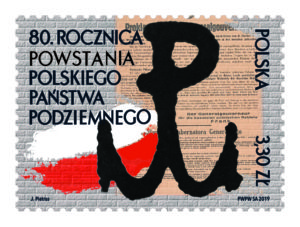
80th anniversary of the creation of Polish Underground State …
denomination: 3,30 PLN; number of stamps in set: 1 (50 pcs in sheet);
print run: 150 000 pcs.; printing techniques: photogravure;
paper: fluorescent; stamp size: 43 x 31,25 mm; number of FDC: 1;
author: Jerzy Pietras; circulation date: 27th September 2019.

Polskie Termopile – Wizna
www.nbp.pl
Narodowy Bank Polski jest centralnym bankiem państwa odpowiadającym za politykę pieniężną i stabilność cen. Jego funkcje określa Konstytucja Rzeczypospolitej Polskiej i ustawa o NBP. NBP ma wyłączne prawo emisji pieniądza. Jako bank centralny nie prowadzi rachunków bankowych obywateli, nie przyjmuje od nich lokat, nie udziela kredytów. Prowadzi natomiast obsługę budżetu państwa, a także podmiotów sektora finansów publicznych. Gromadzi rezerwy walutowe państwa i zarządza nimi. Pełni funkcję banku banków, tworząc warunki do działania systemu bankowego. Jest również jednym z najważniejszych ośrodków naukowo-analitycznych w dziedzinie ekonomii i rynków finansowych. 29 sierpnia 2019 roku Narodowy Bank Polski wprowadził do obiegu srebrną monetę o nominale 20 zł z serii „Polskie Termopile – Wizna”.
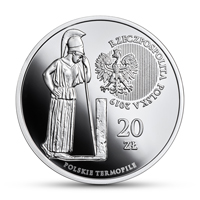
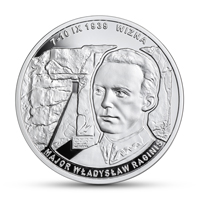
Nominał 20 zł … metal: Ag 925/1000; stempel: lustrzany;
średnica: 38,61 mm; masa: 28,28 g; brzeg (bok): gładki;
nakład: do 15 000 szt.; Projektant awersu: Urszula Walerzak;
Projektant rewersu: Anna Wątróbska-Wdowiarska; Emitent: NBP;
Na zlecenie NBP monety wyprodukowała Mennica Polska S.A.
Na rewersie monety umieszczono wizerunek mjr. Władysława Raginisa
na tle schronu koło Góry Strękowej (zwanego schronem Raginisa).
Na awersie wszystkich monet z serii „Polskie Termopile”
widnieje Atena, bogini sprawiedliwej wojny i mądrości.
Bitwa pod Wizną jest jednym z najsłynniejszych epizodów bohaterskiej obrony Polski we wrześniu 1939 r. W pobliżu tej miejscowości znajdował się umocniony odcinek fortyfikacji broniący przeprawy przez Narew. Dowodził nim trzydziestojednoletni kapitan Władysław Raginis. Miał do dyspozycji batalion piechoty, złożony m.in. z kompanii fortecznej i kompanii saperów. Było to przeszło 350 żołnierzy i oficerów (a nie – jak podawano w dawniejszych publikacjach – 700), uzbrojonych w 6 dział, 24 ciężkie karabiny maszynowe oraz 2 karabiny przeciwpancerne. Batalion zajmował 8 żelbetowych schronów bojowych, z których ten ulokowany na Górze Strękowej był ośrodkiem dowodzenia. Tymi siłami dowódca „Wizny” przez trzy dni powstrzymywał liczący kilkadziesiąt tysięcy żołnierzy korpus pancerny jednego z najlepszych dowódców niemieckich gen. Heinza Guderiana.
Oddziały niemieckie pojawiły się w pobliżu Wizny 7 września i nazajutrz uderzyły na Polaków. Żołnierze Raginisa nie ulegli potężnemu ostrzałowi artylerii i odparli pierwsze ataki. Następnego dnia skutecznie powstrzymali kolejne, niszcząc kilkanaście czołgów nieprzyjaciela. W tych walkach poległ zastępca Raginisa porucznik Stanisław Brykalski, a sam kapitan został ciężko ranny. 10 września, kiedy Niemcy zniszczyli już większość polskich schronów, kapitan Raginis rozerwał się granatem. Postąpił zgodnie ze złożoną wcześniej przysięgą, w którejzapowiedział, że nie opuści powierzonej sobie pozycji. „Wyróżniał się zawsze poczuciem obowiązku i żelaznym uporem” – pisał o mężnym dowódcy historyk Apoloniusz Zawilski. Heroizm Raginisa sprawił, że stał się on jednym z bohaterów września 1939 r., tej nierównej walki toczonej przez Wojsko Polskie z dwoma agresorami – Niemcami i Związkiem Sowieckim. Dowodzone przez niego schrony broniące odcinka „Wizna” zyskały zaszczytną nazwę Polskich Termopil. W 2012 r. kapitan Władysław Raginis pośmiertnie otrzymał stopień majora. Informacja: dr hab. Marek Gałęzowski.

The Polish Thermopylae – Wizna
www.nbp.pl
Narodowy Bank Polski is the central bank of the State, responsible for its monetary policy and price stability. The Bank’s functions are described in the Constitution of the Republic of Poland and the Act on NBP. NBP holds the exclusive right to issue the currency of the Republic of Poland. As the central bank, it does not provide accounts for the general public, accept deposits from or extend loans to individuals. It acts as a banker to the State budget and public sector entities. NBP also holds and manages the foreign exchange reserves of the State. Finally, it functions as a banker to banks, creating conditions for the operation of the Polish banking system. Narodowy Bank Polski is one of the most important research and analytical centres in the fields of economics and financial markets. On 29 August 2019, Narodowy Bank Polski issued into circulation a silver coin of the series “The Polish Thermopylae” – Wizna, with a face value of 20 złoty.


Face value 20 zł … Metal: Ag 925/1000 Finish: proof;
Diameter: 38.61 mm; Weight: 28.28 g; Edge (side): plain;
Mintage: up to 15,000 pcs; Obverse designer: Urszula Walerzak;
Reverse designer: Anna Wątróbska-Wdowiarska; Issuer: NBP;
The coins, commissioned by NBP, were struck by Mennica Polska S.A.
The reverse of the coin features an image of Major Władysław Raginis
against the background of the bunker near Góra Strękowa
(known as the Raginis’ bunker). The obverse of all the coins
of the “Polish Thermopylae” series features Athena,
the goddess of just war and wisdom.
The battle of Wizna is one of the most famous episodes of the heroic defense of Poland in September 1939. A fortified defense line guarding the crossing of the Narew River was located near the village of Wizna. It was commanded by the thirty-one-year-old Captain Władysław Raginis. He had an infantry battalion, including a fortress company and an engineering company, at his disposal. The battalion was more than 350 soldiers and officers strong (not 700, as older publications stated), armed with six cannons, 24 heavy machine guns, and two antitank rifles. The battalion occupied eight reinforced concrete bunkers, with the one located on Góra Strękowa serving as the headquarters. With these forces, the commander of Wizna held off the armoured corps of several dozen thousand soldiers under one of the best German commanders, General Heinz Guderian, for three days. The German troops approached Wizna on 7 September and struck the Poles on the following day. Raginis’ men did not succumb to the powerful artillery fire and countered the initial attack. On the following day, they halted further attacks, destroying a dozen or so enemy tanks.
The deputy commander, Lieutenant Stanisław Brykalski, was killed in the fighting, and the Captain was heavily wounded. On 10 September, when the Germans had already destroyed most of the Polish bunkers, Captain Raginis committed suicide by throwing himself on a grenade. He was faithful to his oath in which he swore not to surrender his position. As historian Apoloniusz Zawilski wrote about the brave commander, “He had always displayed an extraordinary sense of duty and dogged persistence.” The bravery of Raginis made him a hero of September 1939 – the uneven battle fought by the Polish Army with two aggressors, Germany and the Soviet Union. The bunkers defending the Wizna line under his command earned the honourable name of the Polish Thermopylae. In 2012, Captain Władysław Raginis was posthumously promoted to the rank of major. Info: Marek Gałęzowski, PhD.

100-lecie polskiej flagi państwowej
www.nbp.pl
Narodowy Bank Polski jest centralnym bankiem państwa odpowiadającym za politykę pieniężną i stabilność cen. Jego funkcje określa Konstytucja Rzeczypospolitej Polskiej i ustawa o NBP. NBP ma wyłączne prawo emisji pieniądza. Jako bank centralny nie prowadzi rachunków bankowych obywateli, nie przyjmuje od nich lokat, nie udziela kredytów. Prowadzi natomiast obsługę budżetu państwa, a także podmiotów sektora finansów publicznych. Gromadzi rezerwy walutowe państwa i zarządza nimi. Pełni funkcję banku banków, tworząc warunki do działania systemu bankowego. Jest również jednym z najważniejszych ośrodków naukowo-analitycznych w dziedzinie ekonomii i rynków finansowych. 14 sierpnia 2019 r. Narodowy Bank Polski wprowadził do obiegu srebrną monetę o nominale 10 zł „100-lecie polskiej flagi państwowej”.

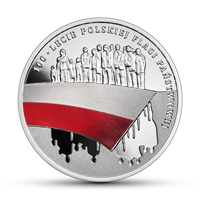
Nominał: 10 zł … Metal: Ag 925/1000; Stempel: lustrzany, druk UV;
Średnica: 32,00 mm; Masa: 14,14 g; Brzeg (bok): gładki;
Nakład: do 13 000 szt.; Projektant: Anna Wątróbska-Wdowiarska;
Emitent: NBP; Producent: Mennica Polska S.A. na zlecenie NBP;
Na każdej polskiej monecie kolekcjonerskiej znajdują się: nominał,
wizerunek orła ustalony dla godła Rzeczypospolitej Polskiej,
napis: Rzeczpospolita Polska, rok emisji.
Emisja wartości kolekcjonerskich stanowi okazję do upamiętniania
ważnych historycznych rocznic i postaci, jak i do rozwijania
zainteresowań polską kulturą, nauką i tradycją.
Biało-czerwona ma dopiero sto lat, choć jest najprostszym znakiem symbolizującym Orła Białego, będącego herbem Polski od ośmiu wieków. Górny, biały pas symbolizuje na fladze orła, a dolny − czerwony − barwę tarczy herbowej. Flaga w postaci, której dziś używamy, została wprowadzona dopiero po odzyskaniu niepodległości. W średniowieczu bowiem pod inną chorągwią wychodziło w pole rycerstwo królewskie, a pod innymi rycerstwo poszczególnych ziem czy najznamienitszych rodów. Jan Długosz, pisząc o bitwie pod Grunwaldem, wspomina o „chorągwi wielkiej, na której wyszyty był misternie orzeł biały z rozciągnionemi skrzydły, dziobem rozwartym i z koroną na głowie, jako herb i godło całego Królestwa Polskiego”. Oprócz niej na polach Grunwaldu stanęło rycerstwo w liczbie ok. czterdziestu polskich chorągwi oraz drugie tyle litewskich i innych.
Po unii lubelskiej, której 450. rocznicę obchodziliśmy w tym roku, zaczęła obowiązywać chorągiew składająca się z trzech poziomych pasów: czerwonego, białego i czerwonego. Na jej środku umieszczano czteropolowy herb Rzeczypospolitej, gdzie po przekątnych znajdowały się po dwa Orły Białe i dwie Pogonie Litewskie, w czerwonych polach. Często nakładano na nie kolejny, mniejszy herb z godłem osobistym (rodowym) króla elekcyjnego. Zestawienie bieli i czerwieni jako barw narodowych po raz pierwszy wykorzystano na szerszą skalę w 1792 r. podczas obchodów pierwszej rocznicy uchwalenia Konstytucji 3 maja.
W 1831 r. Sejm Królestwa Polskiego ustanowił biało-czerwoną kokardę narodową. Używany współcześnie wzór flagi wprowadził dopiero Sejm Ustawodawczy odrodzonej Rzeczypospolitej 1 sierpnia 1919 r. W pierwszej ustawie o godłach i barwach RP znalazł się taki zapis: „Za barwy Rzeczypospolitej Polskiej uznaje się kolor biały i czerwony w podłużnych pasach równoległych, z których górny − biały, dolny zaś − czerwony”. Dwa lata później Ministerstwo Spraw Wojskowych wydało broszurę, w której zdefiniowano odcień czerwieni jako karmazyn. W 1955 r. zmieniono ją na bardziej ceglasty cynober, a w 1980 r. zapisano po prostu: „czerwień”. Biało-czerwona, jako symbol najprostszy i najbardziej czytelny, towarzyszy Polakom w chwilach dla Narodu i Państwa najważniejszych. Współczesne techniki mennicze umożliwiły zaprezentowanie naszych barw narodowych na monecie kolekcjonerskiej. Umieszczono na niej stylizowany wizerunek polskiej flagi, przechodzący z awersu na rewers. Na rewersie widać też sylwetki ludzi, symbolizujące polskie społeczeństwo. Informacja: Robert Szydlik.

100th Anniversary of the National Flag of Poland
www.nbp.pl
Narodowy Bank Polski is the central bank of the State, responsible for its monetary policy and price stability. The Bank’s functions are described in the Constitution of the Republic of Poland and the Act on NBP. NBP holds the exclusive right to issue the currency of the Republic of Poland. As the central bank, it does not provide accounts for the general public, accept deposits from or extend loans to individuals. It acts as a banker to the State budget and public sector entities. NBP also holds and manages the foreign exchange reserves of the State. Finally, it functions as a banker to banks, creating conditions for the operation of the Polish banking system. Narodowy Bank Polski is one of the most important research and analytical centres in the fields of economics and financial markets. On 14 August 2019, Narodowy Bank Polski issued into circulation a silver coin “100th Anniversary of the National Flag of Poland” with the face value of 10 złoty.


Face value: 10 zł … Metal: Ag 925/1000; Finish: proof, UV print;
Diameter: 32.00 mm; Weight: 14.14 g; Edge: plain;
Mintage: up to 13,000 pcs.; Designer: Anna Wątróbska-Wdowiarska;
Issuer: NBP; The coins, commissioned by NBP, were struck
by Mennica Polska S.A.
All Polish collector coins feature face value; the image of the Eagle established as the state emblem of the Republic of Poland; inscription: Rzeczpospolita Polska year of issue. Issuing collector items is an occasion to commemorate important historic figures and anniversaries, as well as to develop the interest of the public in Polish culture, science, and tradition.
The Polish white-and-red flag is only 100 years old, even though it is the simplest sign symbolising the White Eagle, which has been the emblem of Poland for eight centuries. The upper white stripe of the flag symbolises the Eagle, while the red one symbolises the colour of the escutcheon. The flag in the form in which it is used these days was introduced only after Poland regained its independence following the partitions. In the Middle Ages, the ensign carried by knights of the Polish kingdom would differ from the ones representing individual lands or the most eminent families. When writing about the Battle of Grunwald, Jan Długosz mentioned: “a huge ensign, bearing a meticulously embroidered white eagle with its wings stretched out, its beak open and a crown on its head, as the coat-of-arms and the emblem of the entire Kingdom of Poland”. Next to it, on the fields of Grunwald stood Polish knights numbering forty companies and the same number of companies of Lithuanian and other knights.
Following the Union of Lublin, whose 450th anniversary Poland celebrated in 2018, a new ensign comprising three horizontal stripes – red, white and red – became the ensign of the Polish knights. At its centre, a four-field coat-of-arms of the Commonwealth was placed, with two White Eagles and two Lithuanian Chasers (Pahonia) placed diagonally in red fields. Often, a smaller emblem with the personal (family) coat-of-arms of the elected king was placed on the ensign. The composition of white and red as national colours was first used on a wider scale in 1792, during the celebrations of the first anniversary of the passing of the Constitution of 3rd May. In 1831, the Sejm of the Congress Kingdom of Poland adopted a white-and-red cockade as the official national symbol. The design of the flag used these days was only introduced by the Legislative Sejm of the reborn Republic of Poland on 1 August 1919.
In the first act on the coat-of-arms and the national colours of the Republic of Poland, the following was written: “The colours of the Republic of Poland shall be white and red in horizontal stripes arranged lengthwise, of which the upper is white and the lower is red.” Two years later, the ministry of military affairs issued a brochure in which the shade of red was defined as crimson. In 1955, the shade of red was changed to more brick-red cinnabar, and in 1980, the shade was regulated simply as “red”. The white-and-red flag, as the simplest and clearest symbol, accompanies Poles at the moments of the highest importance to the Nation and the State. Contemporary minting techniques made it possible to present the Polish national colours on a collector coin. The coin depicts a stylised image of the Polish flag passing between the obverse and the reverse of the coin. The reverse of the coin also depicts human silhouettes symbolising the Polish people. Info: Robert Szydlik.


Nonstop across the Atlantic
www.canadapost.ca https://postagestampguide.com
In 1913 the London daily Mail offered a dramatic prize of 10,000 pounds for the first nonstop flight between Great Britan and North America. Six years later the prize lay unclaimed, and two Britons, Capitan John Alcock, and Lieutenant Arthur Whitten Brown, decided to accept the challenge. On June 14, 1919, these intrepid pioneers took off from St. John’s, Newfoundland in a twin-engine Vickers-Vimy. Over 1,800 miles of choppy ocean lay ahead, and in their open-cockpit plane, they were confronted with the perennial foe of aviators – bad weather. Yet in spite of the weather and appalling discomfort, success was theirs. On June 15, sixteen hours and twenty-seven minutes after take-off, they crash-landed in a bog at Clifden, Ireland. Their cargo, a mail pouch, was intact. Alcock and Brown, unharmed and flushed with victory, collected the prize and joined the ranks of aviation history for the first transatlantic nonstop flight. (47-XI-19)
First Airplane to Cross Atlantic (Non-Stop), Leaving St. John’s, 1919 …
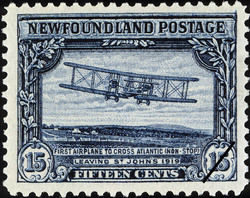
Denomination: 15¢ … Date of Issue: January 3, 1928;
Perforation or Dimension: 14, 14 x 13.5;
Printer: Thomas De La Rue & Company.
Postal Administration: Newfoundland.
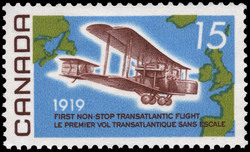
Denomination: 15¢ … Date of Issue: June 13, 1969;
Perforation or Dimension:12 x 12.5; Quantity: 15,170,000;
Printer: British American Bank Note Company.
Postal Administration: Canada.
First Non-Stop Transatlantic Flight, 1919 … About Stamp … From a take-off in Newfoundland, a land now Canadian by the choice of her people, two aviators wrote history in 1919 by completing the first non-stop transatlantic flight. The flight came 100 years after the American brig Savannah, on June 1819, became the first vessel fitted with steam engines to accomplish the same purpose; people at Clifden, Ireland, where the plane landed, were as unbelieving as the crew of an Irish cutter had been mystified in 1819 when outdistanced by the baremasted arriving Savannah. Supersonic airliners, already undergoing trials, are expected to soon accomplish transatlantic crossings in three hours at speeds of up to 1450 m.p.h. flying at altitudes up to 4,500 feet. On 28th May 1919 the twin-engined British Vickers Vimy plane arrived at St. John’s; after assembly at Quidi Vidi Lake it was, on 9th June, given a first Newfoundland test in a flight to a suitable lift-off area, Lester’s Field. One more test flight preceded the historic 14th June 1919 take-off. Passing over the Newfoundland coastline at some 1200 feet the crew of two and their plane headed eastward over the troubled Atlantic where they were to require the greatest of courage and determination; aboard were John Alcock, a native of Manchester, England, born in 1892, and Arthur Whitten Brown, born at Glasgow, Scotland, in 1886.
A comparatively short time had elapsed when dense fog necessitated navigation by dead reckoning; already flying blind, the crew’s communications were silenced and their electrically heated suits rendered useless when blades of the wind-driven generator sheared off. White-hot metal from a split exhaust was one of many hazards overcome. Near dawn, in a tremendous storm, Alcock and Brown were forced downward to an almost calamitous 60-foot elevation. As time wore on rain and sleet changed to snow whereupon Brown unhesitatingly clambered from his open cockpit to edge along the fuselage wielding a knife to chop the gathering ice. Some 80 miles from Ireland the adventurers passed into clear skies still trying to free choking vital controls. Alcock set his machine into a glide searching for the layer of warmer air which he found at the 200 ft. level; soon thereafter, at 8:25 a.m., the coast was passed. Weather conditions cancelled plans to fly to London, therefore, the decision was made to set down on what appeared to be a grassy meadow; the meadow proved to be an Irish bog in Co. Galway where the plane came to rest at 8:40 a.m., 15th June 1919, tail-up and nose buried in the wet earth. Uninjured, Alcock and Brown completed their crossing at an average speed of about 112 m.p.h.
Various authorities report minor differences in distance and elapsed time, however, an Historic Sites and Monuments Board of Canada bronze plaque in Newfoundland records the flyers: “took off nearby on the first non-stop transatlantic flight in a Vickers ‘Vimy’ airplane at 12:58 p.m. Newfoundland time. Sixteen hours and twelve minutes later they landed in Clifden, Ireland, a distance of 1,800 miles”. Both knighted by King George V, Alcock and Brown had earlier, from the hands of Winston Churchill, the Secretary of State for War and Air, received an award of 10,000 pounds. Alcock died in an air accident on 18th December 1919; Brown died in 1948 at his home in Wales. The Vickers Vimy remains on display at the Science Museum in South Kensington, England. Designed by Robert William Bradford. This stamp has a hidden date in the bottom-right corner.

Leonard Cohen: PermanentTM Domestic stamps
www.canadapost.ca
Celebrate the life of Leonard Cohen with this booklet of nine PermanentTM domestic stamps. The three different stamp designs in this booklet each feature a photograph of Cohen at a different stage of his illustrious career. On the front of the booklet is an image of the massive Cohen tribute mural that rises over Crescent Street in his home city of Montréal. Born in 1934, Cohen was an award-winning poet during his days at McGill University. More poetry and two novels followed after he graduated, including Beautiful Losers in 1966. The following year, Cohen launched a new career in music with an appearance at the Newport Folk Festival and the release of his debut album, Songs of Leonard Cohen. In 1984, Cohen released the album Various Positions. It features “Hallelujah,” his most popular and most covered song.
A member of the Canadian Music Hall of Fame, the Rock & Roll Hall of Fame and the Songwriters Hall of Fame, Cohen has also been honoured with multiple JUNO Awards and a Grammy Lifetime Achievement Award. Cohen died in 2016 at the age of 82, one month after releasing his final album, You Want It Darker. The album’s title track would go on to win the 2018 Grammy Award for Best Rock Performance. The issue date of September 21, 2019, was chosen to coincide with the 85th anniversary of Cohen’s birth.

Stamp value: PermanentTM (domestic rate); Stamp designer: Paprika;
Dimensions: 32 mm x 40 mm; Quantity products: 350,000;
Issue date: September 21, 2019; Cancellation site: Montreal QC.
Add this celebrated Canadian icon to your collection with a set of four Official First Day Covers featuring acclaimed Canadian writer and musician Leonard Cohen. One Official First Day Cover bears all three Permanent domestic stamps from this issue, while the others feature the oversized-rate stamp, the U.S.-rate stamp, and the international-rate stamp, respectively. Each Official First Day Cover features a photograph of Cohen at a different stage of his illustrious career. On the reverse, the engaging historical text tells the story of Cohen’s life, work, awards, and achievements. The stamps are postmarked in Cohen’s home city of Montréal, and each Official First Day Cover is canceled with a different pictorial cancellation, inspired by art from his albums.

2019 … $20 Pure Silver Coin – Lest We Forget
www.canadapost.ca www.mint.ca
A Murano tribute to those who made the ultimate sacrifice. It reminds us of sacrifices made in times of war and in the defense of peace. When woven into a wreath and laid upon our monuments, the bright red poppy acts as a solemn mark from a grateful nation — one that promises to never forget. A Murano glass poppy tops our 2019 tribute to the men and women who lost their lives in the service of our county. Behind this red flower of Remembrance, the engraved design is based on the poppy wreaths laid at the foot of our war memorials each November 11. Its cross-shaped ribbon bears the promise made to the fallen, even as it stretches across the famous wildflowers of Flanders.
A handcrafted Murano poppy is a glass symbol of remembrance on this pure silver tribute to courage, dedication, and sacrifice. Frostings add depth to the design while emphasizing the beautifully engraved details, like the gentle curl of the poppy petals and foliage. The incuse text is a pledge to remember all who have fallen and to acknowledge the valour of all who serve. The engraved poppies have been individually sculpted and frosted to emphasize the individual stories of remembrance behind our collective memory of sacrifice.
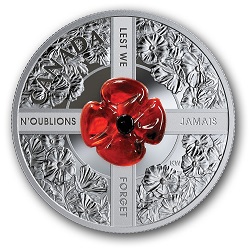
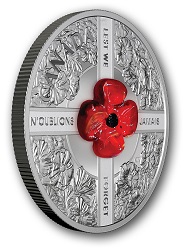
Face value: 20 dollars … Composition: 99.99% pure silver;
Mintage: 6,000; Finish: proof; Weight: 31.39 g;
Diameter: 38 mm; Edge: serrated; Certificate: serialized;
Artist: Kerri Weller (reverse), Susanna Blunt (obverse).
Design: Designed by artist Kerri Weller, your coin is based on the poppy wreaths that are a common sight at commemorative services held each November 11 in Canada (Remembrance Day). A solemn symbol of remembrance, a red Murano glass poppy is centrally positioned against the coin’s proof finish. A wreath of poppies (Papaver rhoeas) forms a circular shape that represents continuity and hope behind the cross-shaped ribbon that bears the incuse text “LEST WE FORGET N’OUBLIONS JAMAIS”. The obverse features the effigy of Her Majesty Queen Elizabeth II by Susanna Blunt.
“The poppy (Papaver rhoeas) is a poignant symbol that evokes memories of our veterans, their sacrifices and a mutual longing for peace on this planet we all call home. In designing this coin, I looked to my family’s own wartime experiences to find that emotional space in which I could distil these key concepts of loss, remembrance, and hope.” Kerri Weller, Artist.
“A Murano poppy is something we’ve never done before and the effect is stunning. There’s no mistaking its meaning. And by making sure each poppy stands out, the engraved wreath was our way of representing the many individual stories of sacrifice and remembrance. It was truly an honour to work on this project.” Erica Maga, Product Manager, Royal Canadian Mint.
Did you know… * Written in 1915, the poem In Flanders Fields by John McCrae of Guelph, Ont., inspired the international campaign behind the poppy symbol of remembrance. * Poppies flourished in Flanders during the Napoleonic Wars but disappeared soon after the battles ended. It was the same with the First World War: bombardments disrupted the chalky soil and infused it with lime from the rubble, thus creating favourable conditions for Popaver rhoeas to (briefly) appear on the battlefields. * In 1921, the Great War Veteran’s Association in Canada—the predecessor of the Royal Canadian Legion—officially adopted the poppy as a Flower of Remembrance. * Today, the poppy honours the memory of the 117,000 Canadian servicemen and women who lost their lives. It is worn during the Remembrance Day period, from the last Friday in October to November 11. * If you remember having a lapel poppy with a green centre, you’re not wrong: the black centre changed to green in 1980, then back to black again in 2002 to reflect the poppy’s actual colours.

2019 … $10 Pure Silver Coin – Remembrance Day
www.canadapost.ca www.mint.ca
The price of war – and a delicate peace. For nearly a century, the delicate poppy has symbolized the fallen soldier. Within a single flower are four petals or more – each illustrating how a soldier never falls alone. Behind every fallen soldier is a mother, a father, siblings, relatives, and friends left behind. One hundred years after the signing of the Treaty of Versailles, the poppy continues to be an enduring icon, reminding us of not only the fallen from the First World War but of all wars. This first-ever poppy-shaped coin is a poignant reminder of the cost of war, the fragility of peace, and the enduring hope of those who step forward to serve.
This first-ever poppy-shaped coin takes Canada’s annual remembrance to new heights. Its tactile, four-petal contours are unprecedented, making this coin a must-have collectible in its own right. We’ve never applied colour in this way. It’s an innovative twist to a traditional technique that captures the poppy’s layered and airy feel in a way that has not been seen on previous poppy coins. A timeless tribute—for all. As the world marks the 100th Anniversary of the Treaty of Versailles, the symbolism of the poppy extends far beyond the First World War. This poppy-shaped coin is a heartfelt memento that will be treasured by anyone who has ever served. Show and share your gratitude and respect for your personal hero with this memorable, one-of-a-kind keepsake.
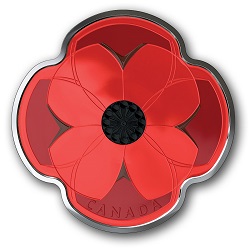
Face value: 10 dollars … Composition: 99.99% pure silver;
Mintage: 10,000; Finish: proof with colour; Weight: 15.87 g;
Diameter: 34 mm; Edge: plain; Certificate: serialized;
Artist: Jamie Desrochers (reverse), Susanna Blunt (obverse).
Design: This multi-layered poppy illustration by Canadian artist Jamie Desrochers features four indentations along the circumference, providing the framework for the poppy’s four petals. Repeating graphics shapes, intersecting lines, and the innovative use of colour and engraving create the illusion of endless petals. The flower’s pistil appears as the centre of the design in black, and the word CANADA is engraved along the outer edge of the bottom petal. The obverse features the effigy of Her Majesty Queen Elizabeth II by Susanna Blunt at the centre of the coin, with ELIZABETH II, D.G. Regina, and 10 DOLLARS engraved along the outer edge of three petals.
Did you know… * The First World War is the bloodiest war Canada has ever fought. It claimed over 60,000 lives. Ypres (1915), the Somme (1916), Vimy Ridge (1917) and Passchendaele (1917) are just a few of the battles where Canadian and Newfoundlander soldiers distinguished themselves. Their courage earned the Allies’ respect and raised Canada’s presence on the world stage. * In 1914, Newfoundlanders rushed to enlist, leading to a shortage of khaki uniforms; some donned blue-coloured leggings, which earned the 1st Newfoundland Regiment its nickname as “The Blue Puttees.” * For Newfoundland, the tragic memory of her fallen sons during the Battle of Beaumont-Hamel endures in the generations that have followed every July 1st. They solemnly regard that day as a symbol of unity, courage and tremendous sacrifice.

2019 … Pure Silver Coin – The Fabric of Canada
www.mint.ca www.canadapost.ca
Canada’s iconic red-and-white flag first made its way up the flagpole on Parliament Hill at noon on February 15, 1965: a moment that was decades in the making. Canada started exploring the idea of replacing Great Britain’s Royal Union Jack with its own flag in the late 1800s. Though the issue was taken up by formal committees over the decades that followed, the project always seemed to stall. In 1964, with Canada’s centennial just around the corner, Prime Minister Lester B. Pearson set up the committee that ultimately chose the now-famous red maple leaf on a white square. Queen Elizabeth II lent the design of her formal proclamation on January 28, 1965, and it was inaugurated on February 15, 1965.
Canada’s flag has come to represent unity within diversity—a trait Canadians take great pride in. Canada became the first officially multicultural country in the world in 1971, recognizing diversity as the foundation of its national identity. This aspect of Canadian identity is protected by law not only in the Charter of Rights and Freedoms (1982) but also in the Canadian Multiculturalism Act (1988). Today, more than 20 percent of Canadians are first-generation immigrants, representing the highest immigrant population among the G7 nations. From the shores of the Atlantic to the vast mountains of the Pacific Coast, diversity is a key thread running throughout the fabric of Canadian society.
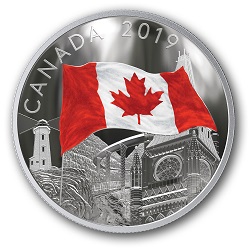
Face value: 30 dollars … Composition: 99.99% pure silver;
Mintage: 2,500; Finish: proof; Weight: 62.69 g;
Diameter: 50 mm; Edge: serrated; Certificate: serialized;
Artist: Rebecca Yanovskaya (reverse), Susanna Blunt (obverse).
Design: The reverse image by Canadian artist Rebecca Yanovskaya is struck on an innovative undulated coin. The undulations give a unique sense of movement to the flag waving in the wind. On the left side of the field is the Peggy’s Point Lighthouse, situated at Peggy’s Cove, Nova Scotia. On the right side of the field is the pinnacle of the Peace Tower that rises above Centre Block on Parliament Hill. Between the two is a detailed image of Kicking Horse Canyon in the picturesque British Columbia interior. The obverse features the effigy of Her Majesty Queen Elizabeth II by Susanna Blunt.
“The undulating effect on this coin is a great example of what I love about my work as an engraver: It’s a chance to explore new ways to enhance the beauty and uniqueness of a coin using advanced technology.” Alex Tirabasso, Royal Canadian Mint 3D Artist and Engraver. Royal Canadian Mint 3D Artist and Engraver, Alex Tirabasso, enjoys the collaborative dance that goes into creating a coin like The Fabric of Canada. “Sometimes,” he explains, “the process starts with the product manager bringing us a design. We work according to Engineering’s exacting standards to virtually engrave an intricate and well-designed piece around this artwork.” But in other cases, the design is inspired by an exciting new capability, as with this unique new coin featuring struck undulations. “I had already been working with Engineering on the idea of carefully generating a sculptural ripple effect on a coin reverse,” Alex explains. “We knew it would be aesthetically pleasing and would lend itself well to coin designs that feature natural movement—like a fluttering flag.”
Did you know… * This beautifully designed coin features scenes from Canada’s most beloved sites, including Peggy’s Cove, Nova Scotia; the Peace Tower on Parliament Hill in Ottawa; and Kicking Horse Canyon in eastern British Columbia. * Peggy’s Cove is said to be named for St. Margaret’s Bay, in which it is located—but there are other legends about the name. One involves a young girl named Margaret, the sole survivor of a shipwreck, who managed to swim to shore and was taken in by local residents. * Peggy’s Cove is also famous for the Peggy’s Point Lighthouse—a world-famous heritage structure from 1868 that today is Canada’s only lighthouse to house a Post Office. It’s one of Canada’s most-visited tourist attractions. * Parliament’s neo-gothic Peace Tower was inaugurated in 1927 when the Centre Block of Parliament was reconstructed following the infamous fire of 1916. It is 91 metres high and holds a carillon of 53 bells. Many of the Peace Tower’s features were designed to honour Canadians who served in the First World War. * Kicking Horse Canyon, located in British Columbia’s Rocky Mountain Trench about 250 kilometres west of Calgary, is named after a real kicking horse. When the horse kicked James Hector—an explorer surveying the B.C. interior—the unfortunate gentleman was launched into the river below. He survived and memorialized the moment by naming the river and the canyon “Kicking Horse”.

2019 … $10 Pure Silver Coin
– 50th Anniversary of the Official Languages Act
www.canadapost.ca www.mint.ca
Together, Ensemble — O Canada! They’re the lyrics you hear on Canada Day, at a citizenship ceremony, or before the first puck drop at a hockey game. Sung in our two official languages, English and French, O Canada is an invitation for every Canadian to add their voice to a musical expression of pride! This anthem-themed collectible commemorates the 50th anniversary of the first Official Languages Act (1969), which gave equal status to English and French in Canada — two languages that represent more than 300 years of shared history. Our first coin with text so small, it’s almost not visible. Closer inspection of the rim reveals the lyrics to O Canada in both official languages—English and French.
A circular pattern of laser-engraved maple leaves adds a sense of movement to the design from behind the larger, traditionally engraved elements. The engraved design includes two maple leaves—one for each official language and both tinted in one of Canada’s official colours. This collectible is an affordable addition to any collection and a show of pride for Canada’s linguistic duality. Our two official languages are rooted in our history, and they continue to shape our identity today.
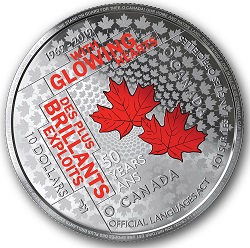
Face value: 10 dollars … Composition: 99.999% pure silver;
Mintage: 5000; Finish: proof with colour; Weight: 15.87 g;
Diameter: 34 mm; Certificate: serialized;
Artist: Joel Kimmel (reverse), Susanna Blunt (obverse).
Design: Designed by Joel Kimmel, the selectively coloured reverse is double-dated (1969 – 2019) to commemorate the 50th anniversary of the Official Languages Act. Two red maple leaves represent Canada’s two official languages, English and French. Throughout the field, a laser-engraved circular pattern of maple leaves pulls the viewer into the design while expressing a surge of pride. From the English version of “O CANADA” come the words “WITH GLOWING HEARTS”, which are perpendicular to the French words, “DES PLUS BRILLANTS EXPLOITS”. Encircling the design are the full lyrics of the bilingual version of the national anthem, with the text so small, it’s almost not visible. The reverse includes a bilingual “50 YEARS ANS” inscription. The obverse features the effigy of Her Majesty Queen Elizabeth II by Susanna Blunt.
Did you know… Confederation—specifically, section 133 of the British North America Act (1867)—designated English and French as the languages of our legislature and federal courts. But it was the Official Languages Act that gave the two languages equal status when it came into force on September 7, 1969. The primary goal of the Official Languages Act was to ensure the Government of Canada provides services and communicates with all Canadians in the official language of their choice—English or French.


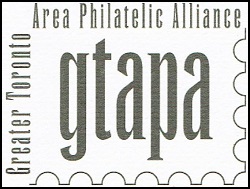
www.gtapa.org
The GTAPA is committed to promote and stimulate
the art of philately to all ages for fun,
culture, education, and friendship.

